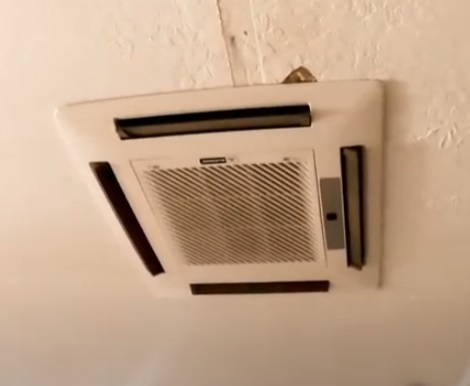
Installing a mini split has many benefits, from better efficiency and lower cost to operate, to DIY installations.
Most are familiar with the ductless wall mounted units, but few are aware mini split units also come in a ceiling mounted option.
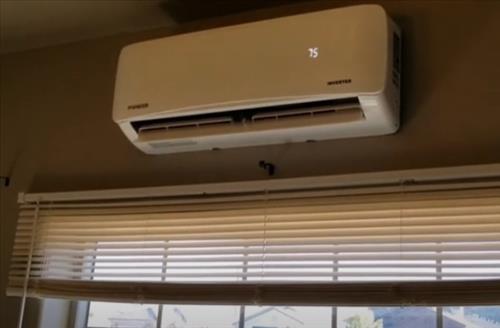
The ceiling mounted option is called cassette type mini split and works just as well as the wall mounted units.
Both types of mini split systems will have an outdoor condenser; only the inside unit is different.
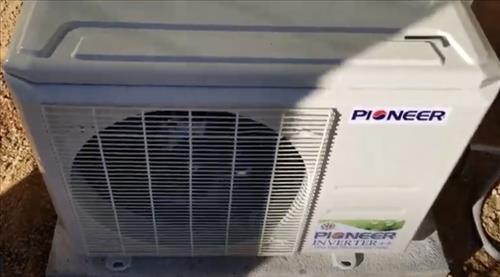
Wall mounted units and cassettes both have the same efficiencies, with both having very good SEER ratings.
What is a Mini Split Ceiling Cassette?
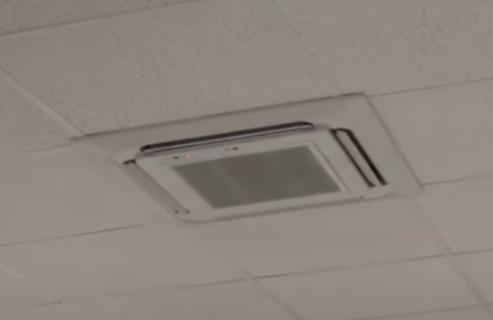
A ceiling cassette mini split has the indoor condenser located on the ceiling.
Ceiling cassette units look more like traditional vents on the roof instead of a big wall unit.
During an installation, a hole is cut into the ceiling, and the indoor cassette unit is mounted.
Refrigerant lines called a line set are run to the cassette and the outside condenser.
A ceiling cassette is also good when there is a long run to the center of a building such as a shop.
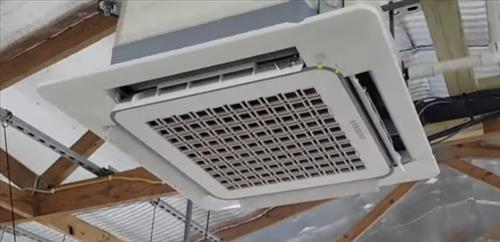
The most common reason for installing a ceiling cassette is the look is preferred over the wall units.
Pros of a Ceiling Cassette Mini Split
- Looks like a standard vent on the ceiling.
- Good when there is no wall space.
- Can make a long run to the center of a room.
Cons of a Ceiling Cassette Mini Split
- Usually cost more.
- Needs attic space to run line set.
- Harder to install.
What is a Wall Mount Mini Split?
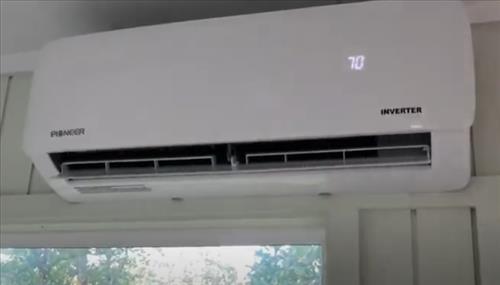
A ductless wall mounted mini split is a unit with the indoor condenser mounted on a wall.
Wall mounted mini split are the most commonly installed units.
They usually cost much less and are the easiest to install. They also do not need attic space to run the refrigerant lines.
Pros of a Wall Mount Mini Split
- Usually easier to install.
- Usually cost less.
- Ideal when no attic space is available.
Cons of a Wall Mount Mini Split
- Big units very visible on a wall.
- Not ideal for a long run to the center of a home.
Can a Mini Splits Be Mounted on the Ceiling?
Yes, mini split ceiling cassettes type units are specially made to be mounted in the ceiling.
Do Mini Split Ceiling Cassette Units Work Well?
Yes, mini split ceiling cassette units work very well.
Wall mounted and ceiling units will both blow condition air into a room.
Are Mini Split Ceiling Cassettes more Expensive than Wall Units?
Yes, ceiling cassette type units are usually more expensive compared to wall mounted units.
Cost can vary depending on the brand and installers, but cassette mini split units often cost more.
Shopping around for a unit is the only way to know what the costs will be.
How Do Mini Split Ceiling Cassettes Work?
Mini split ceiling cassette units work the same as a wall mounted unit, only with the condenser mounted in the ceiling.
The indoor condenser may look different compared to a wall unit, but they both operate the same.
A line set that carries refrigerant will need to be run from the ceiling cassette to the outdoor condenser.
Summary
Both ceiling cassette and wall mounted ductless mini splits are good options with many benefits over traditional heating and cooling.
The main difference between the two types is the way they look inside a home or office.
Most prefer the look of the ceiling cassette type since it is hidden and looks like a vent on the ceiling.
A cassette unit will need attic space to run the line set, usually cost more, and are harder to install.
A wall unit is very visible on a wall and may not be preferred by some homeowners.
The benefits of a wall unit are they usually cost less, require no attic space, and is easier to install.
The benefits of a wall unit are they usually cost less, require no attic space, and is easier to install.
Personally, I always install wall mounted units and do not mind the way they look. They are easier to install, and the lower cost price makes them ideal for me.
With that said, I can see the benefit of a hidden unit in the ceiling, but the other factors make cassette units a better choice for me.
Do you have a preference for which unit is best? Let us know your thoughts below.